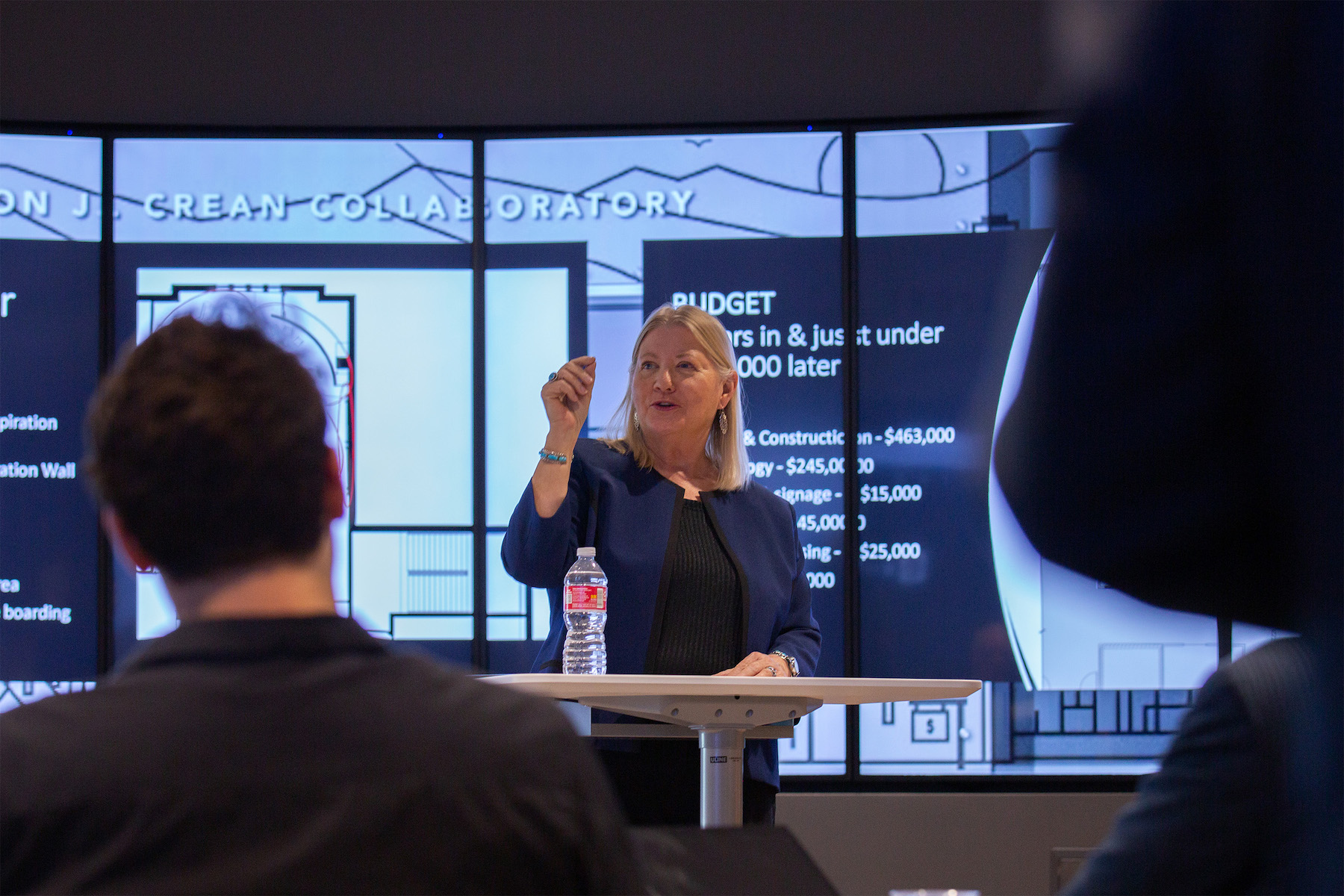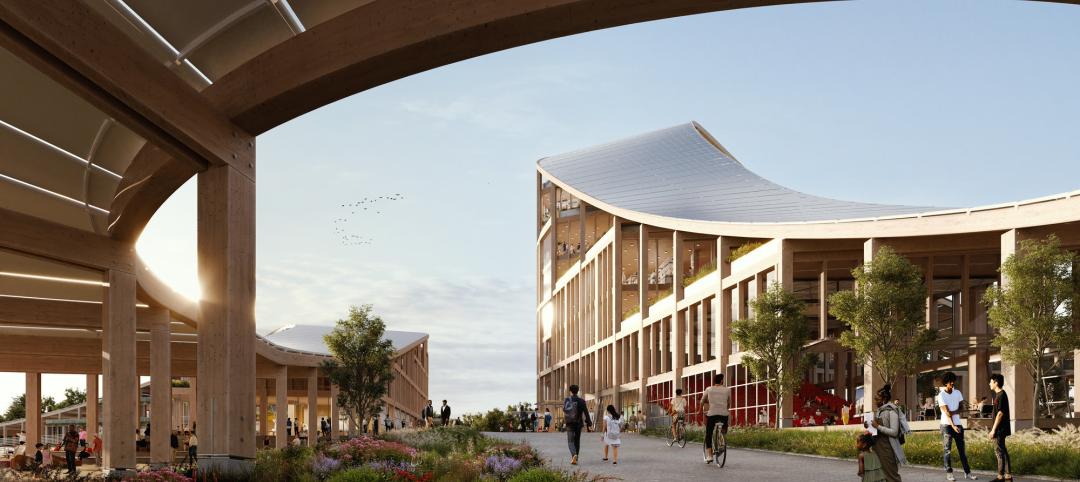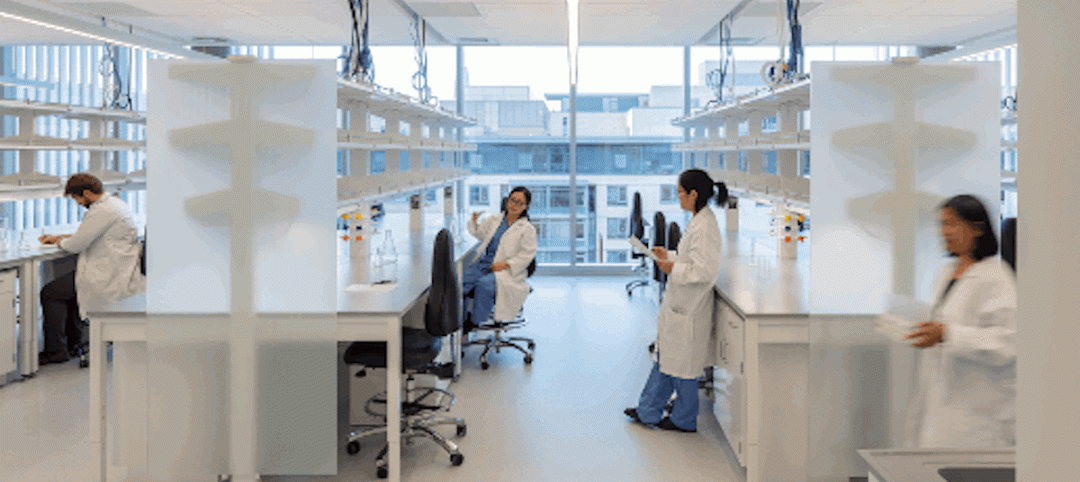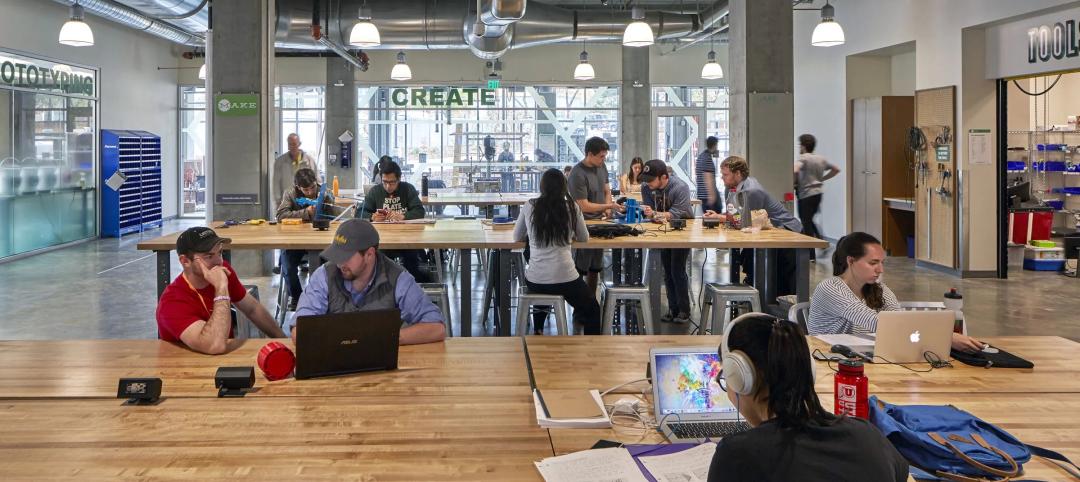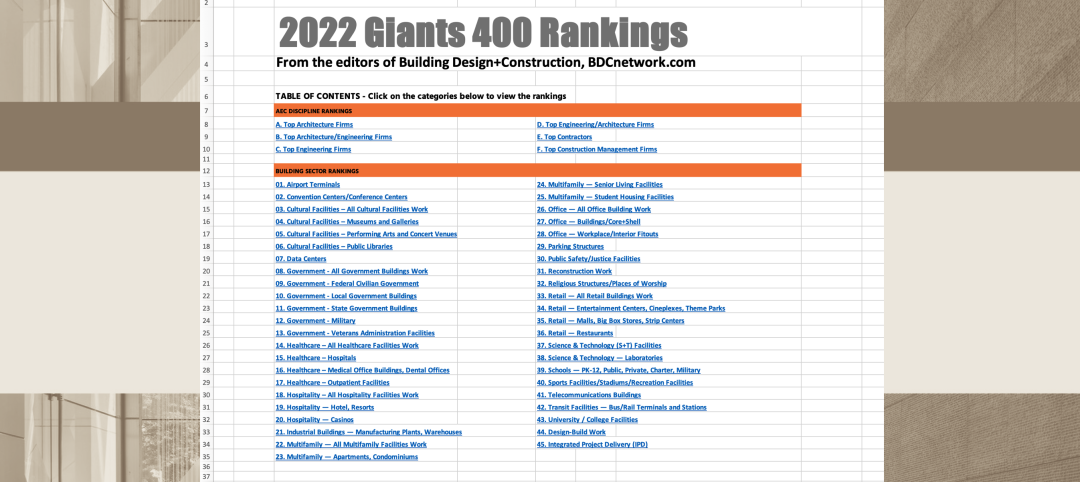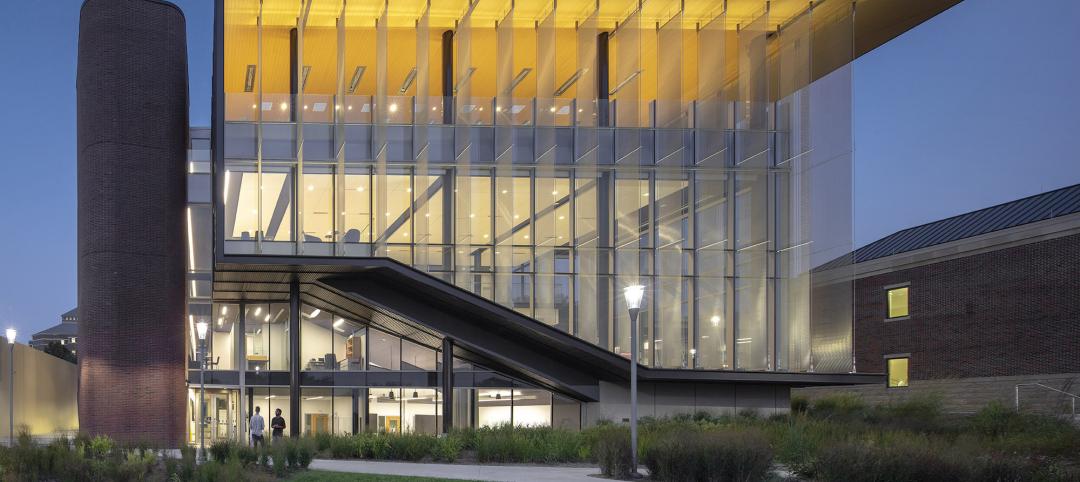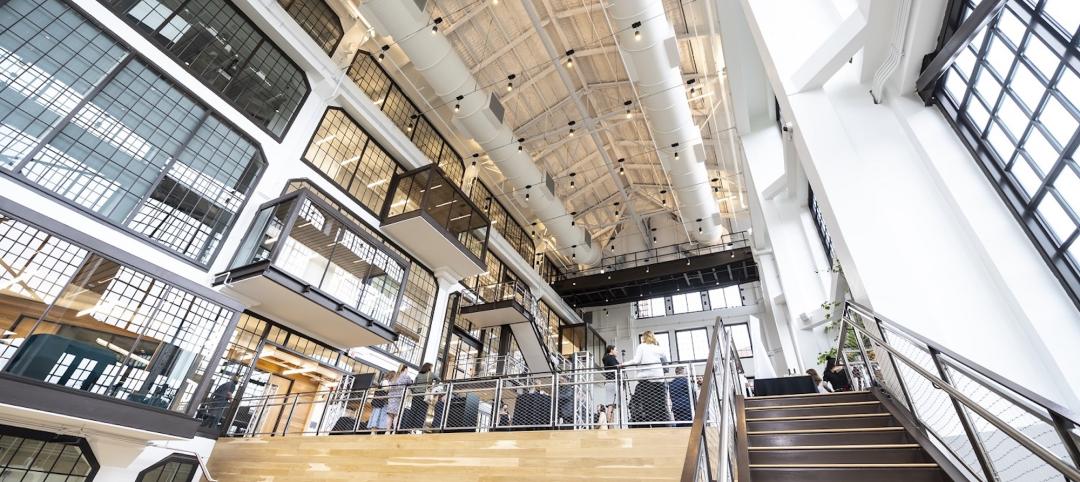Envision a classroom of the 21st century. No, it’s not all metaverse and VR headsets, but it might just be the Collaboratory. The Collaboratory—a mix of collaboration and laboratory—is a networking center being designed at the University of Denver’s College of Business.
While the technological focal point is a large panel screen coined the “Liquid Galaxy,” the focus of the classroom is to emphasize real-world learning opportunities. The overall goal is to encourage collaboration among students, increasing their interactivity with one another and the Collaboratory’s hands-on technology.
Through these tools, the students will receive real-world learning opportunities by engaging with seasoned real estate, property development, and construction professionals. This is especially done through the classroom’s second notable feature: Bluescape, a creative digital collaboration tool.
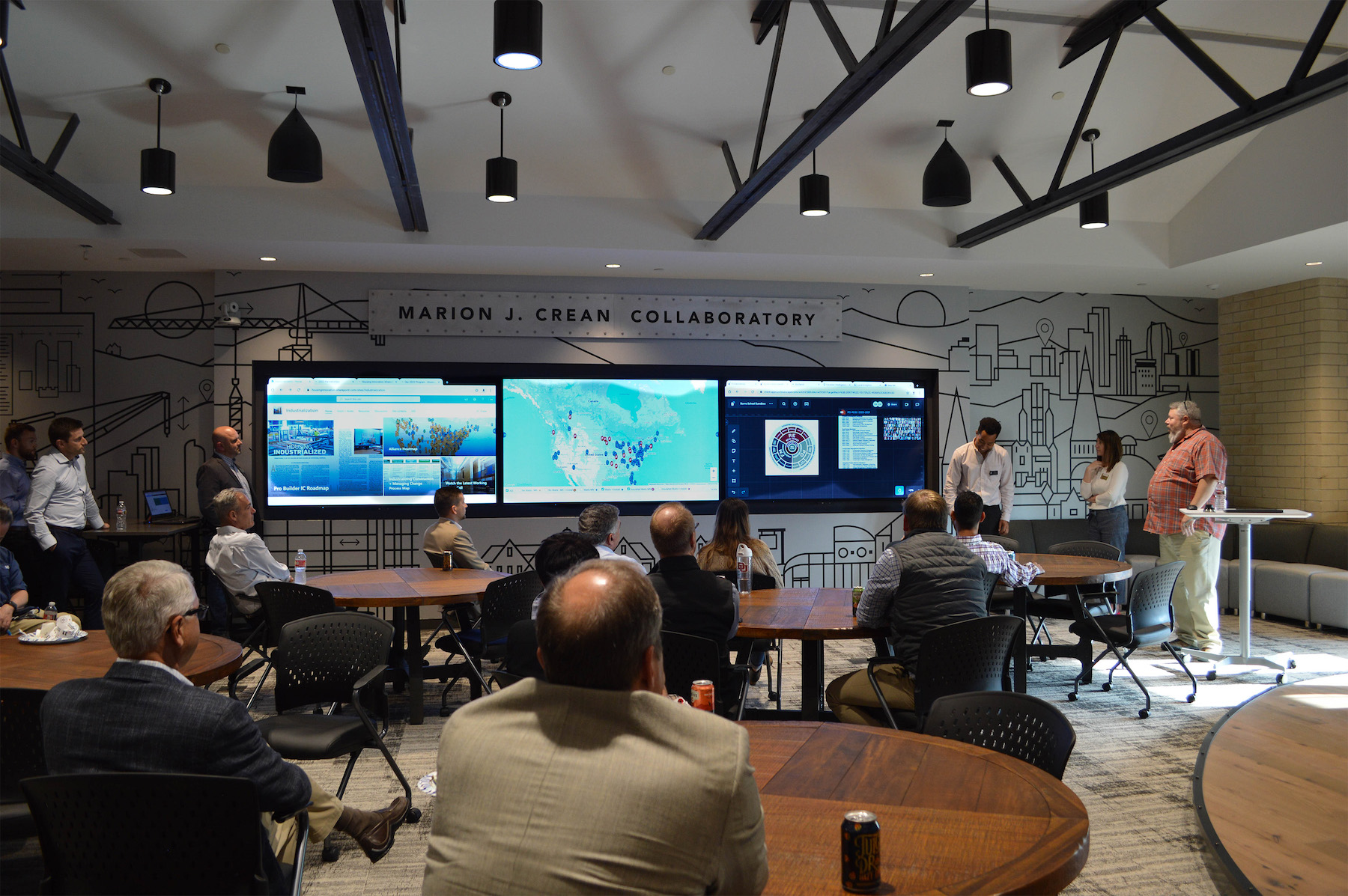
Given the declining workforce development in construction and skilled trades, the Collaboratory aims to help fill the gap. If tech-savvy students are the talent of the future, isn’t it time to create spaces that reflect and enhance their skills?
5 key features of the classroom of the future
The Collaboratory is planned to be a conglomerate of collaborative areas, from conference rooms to stage space. While the space is physically a representation of the business school’s strategy to improve industry connectivity, the real purpose of the Collaboratory is the connections. Here are some of the notable key features of the classroom, and what it might offer to the future of learning.
1. Advisor network conference room
The Marion J. Crean Collaboratory will be equipped with technology that allows students to virtually connect to a network of “advisors” located anywhere in the world (via online collaboration tools like Microsoft Teams and Zoom).
According to Eric Holt, assistant professor at the university, the college has an informal network of alumni and industry professionals that already act in the role of network advisors. He hopes the Collaboratory will help formalize those networks and offer many opportunities to the industry.
This direct access to industry leaders will help students grow and ideally learn from mistakes of the decades of experience that surrounds them.
“It has been an exciting way to connect academia and industry in ways I have never experienced before in my 24-year career,” says Holt.
2. Liquid Galaxy
This feature will allow students and alumni to explore the planet via Google Earth, engaging through a wraparound chamber of multiple LCD screens. This digital workspace brings places to life with immersive panoramic images, video, and tours.
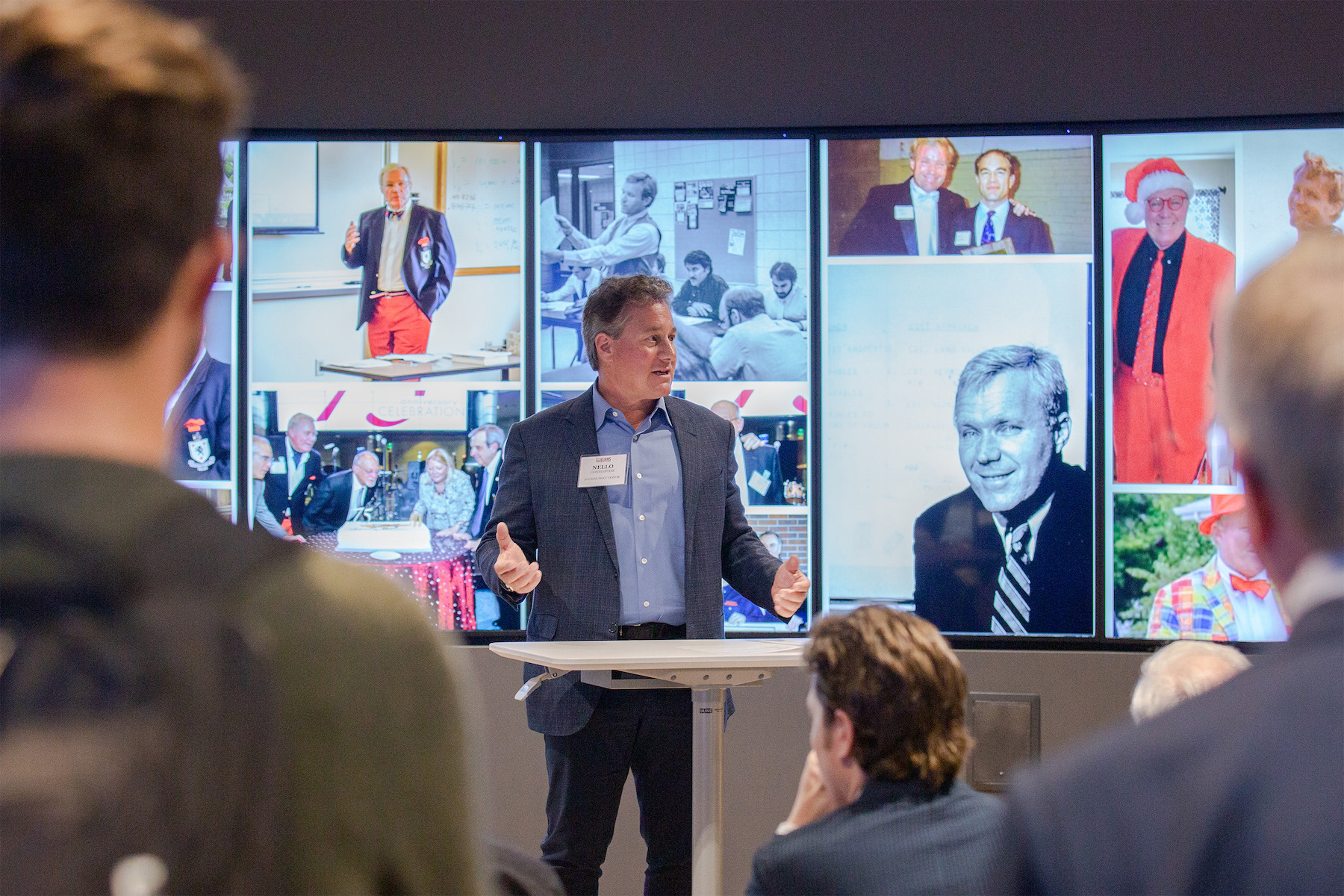
Many believe that the Liquid Galaxy will make waves in attracting talent to the industry—and enable students to become master communicators as well. Marrying prospective young builders with industry tech, the Collaboratory aims to nurture advanced thinking from students early on in their careers.
3. Bluescape interactive virtual workspace wall
Designed as the area where the majority of classroom engagement will take place, the workspace wall is another collection of screens built for collaboration.
According to the Daniels College of Business website, it’s designed to accelerate decision making by enabling anyone to create, communicate, visualize, organize, and strategize virtually anything, anywhere, any time.
4. Barbara Jackson inspiration stage
The self described Ted-Talk-esque stage sits in front of the Liquid Galaxy, allowing industry leaders and guest speakers to have compelling presentations. The goal is to have an engaging platform that brings students and presenters together to discuss a variety of relevant industry topics.
The stage is named after Barbara Jackson, director of the Franklin L. Burns School of Real Estate and Construction Management at the University of Denver. The Collaboratory has been a vision of Jackson’s for years, according to Holt, and eight of those have been spent making the vision a reality.
5. Saipe communication workstation and huddle spaces
The Collaboratory will also have individual and group-oriented workstations, allowing for flexibility of independent work without having to leave the space. Comfortable furnishings are selected to create an inviting environment, encouraging group-work and communication.
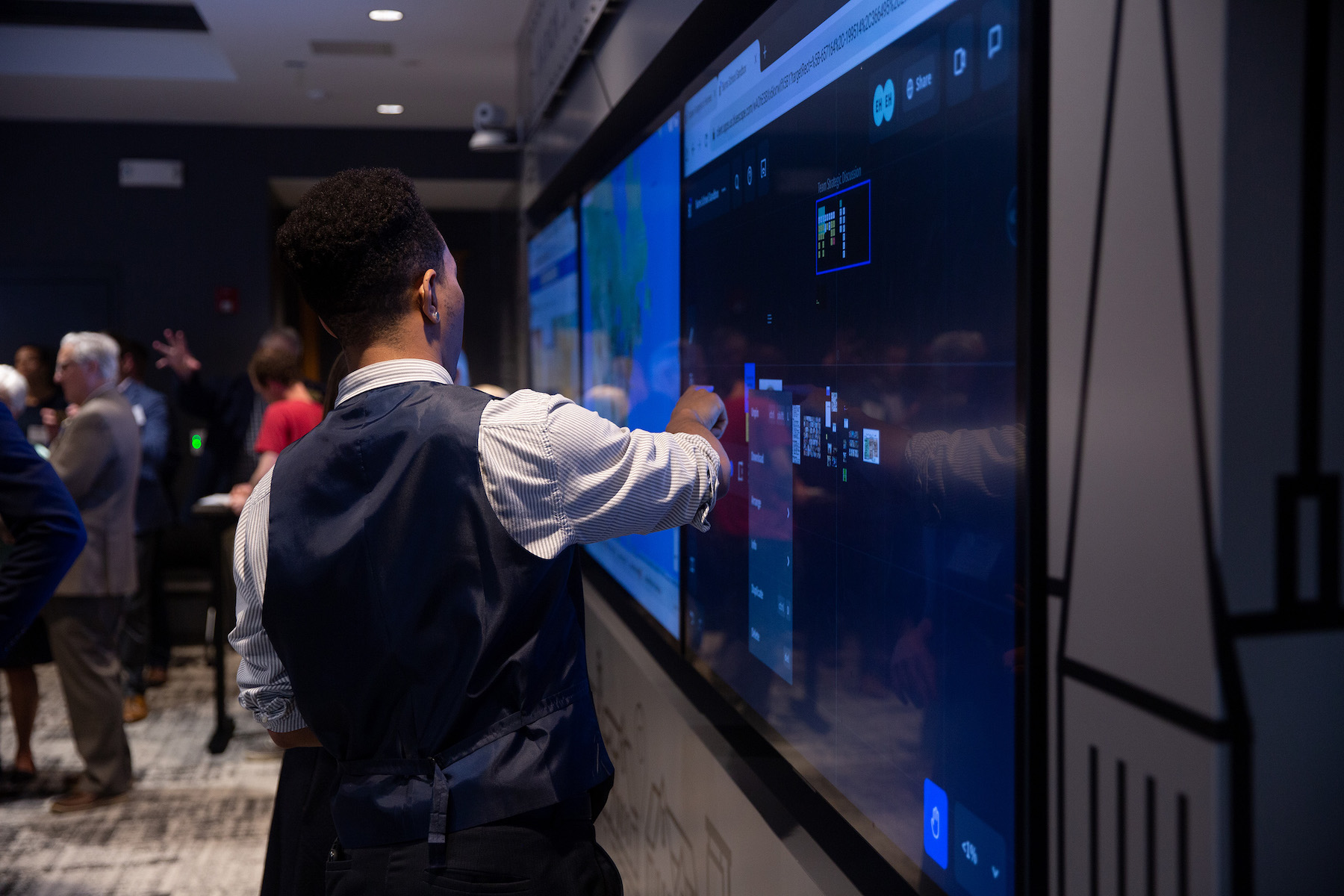
Workforce development and hands-on learning
Workforce development is a big industry problem as of late, and many companies are struggling to hire skilled workers. How can the Collaboratory help train for the trades?
Well, according to Dennis Steigerwalt, president of Housing Innovation Alliance, the Collaboratory will forge stronger bonds between the fresh perspectives of students and the real-world challenges faced by industry.
“We aim to nurture a culture of innovation within our industry, and to establish a framework for open collaboration with value chain partners to drive new solutions for greater impact and a more resilient business,” says Steigerwalt.
The Collaboratory held its facility dedication and official opening ceremony earlier this month. It was a four-day event which started with three homebuilding industry specific VIP events.
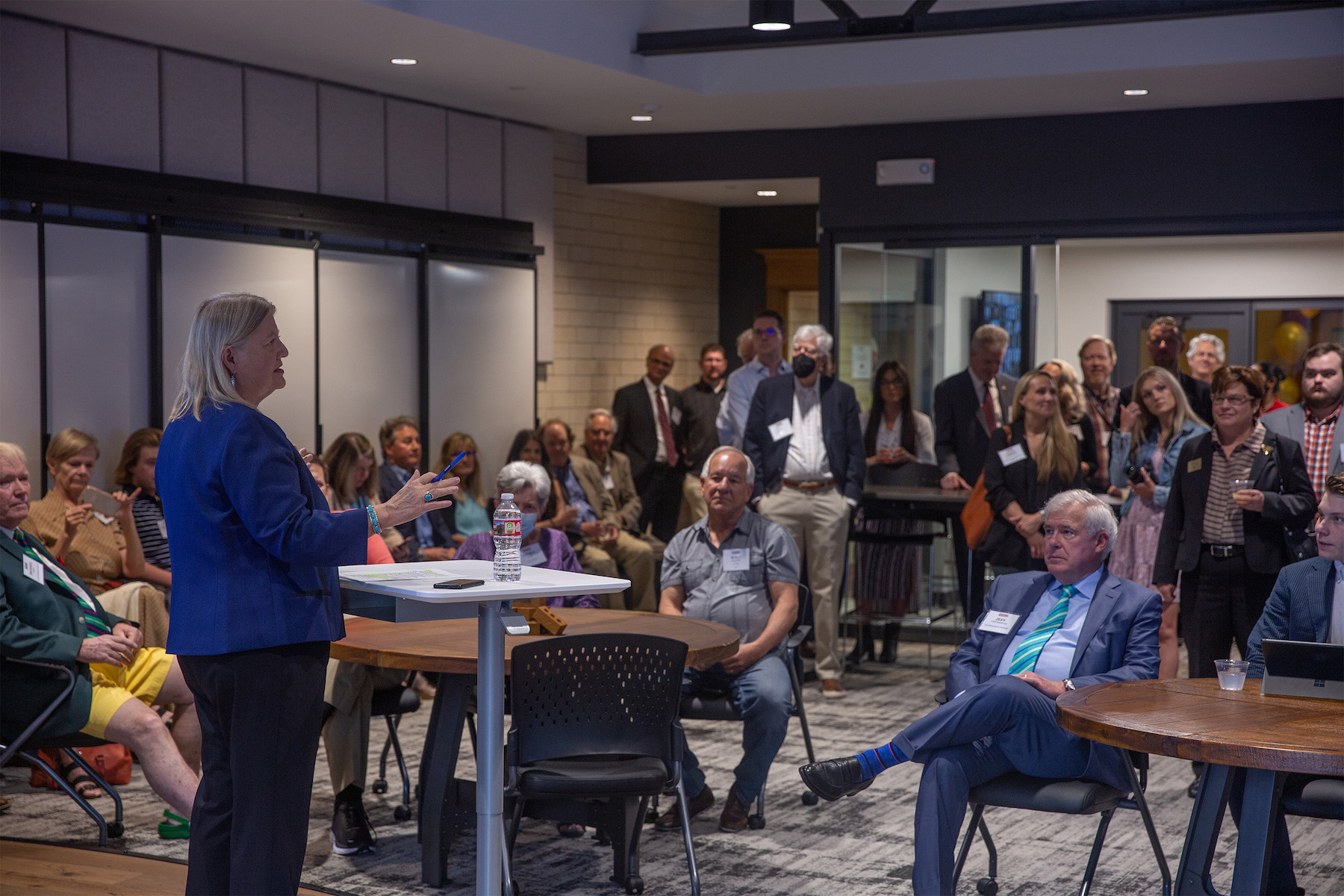
According to Steigerwalt, the VIP events were an opportunity to introduce the platform as a national industry-student engagement vehicle and highlight the enabling technologies within the physical space, such as Bluescape and the Liquid Galaxy.
Representatives from Lennar, MiTek, Mitsubishi, Johns Manville and more attended the event. This included Gene Myers, owner and CEO of Thrive Home Builders, who found the Collaboratory to be a very compelling example of a cutting-edge teaching facility.
“The enthusiasm from students was very strong,” he said, adding that the Collaboratory will certainly aid in student recruitment to the university.
Another attendee of the event was Rodney Hall, partner at Hall-Williams Executive Search—an executive search and recruitment advisory service for real estate development, construction, and property technology.
“For me, the technology side of the physical and virtual space was cool—who doesn’t like big touch screens tethered to Google Earth?” said Hall. “However, the ability to merge, present, and compare content from multiple sources was the trigger point for me. Merging industry data for the benefit of students and corporate participants becomes the bridge between education and practical application—and extends beyond the university level.”
Hall thinks that the Collaboratory model could become the ‘go-to’ for a wide variety of industry studies and reports, ranging from land use to carbon neutral/net zero homes.
Related Stories
Sustainability | May 11, 2023
Let's build toward a circular economy
Eric Corey Freed, Director of Sustainability, CannonDesign, discusses the values of well-designed, regenerative buildings.
BIM and Information Technology | May 8, 2023
3 ways computational tools empower better decision-making
NBBJ explores three opportunities for the use of computational tools in urban planning projects.
Mass Timber | May 1, 2023
SOM designs mass timber climate solutions center on Governors Island, anchored by Stony Brook University
Governors Island in New York Harbor will be home to a new climate-solutions center called The New York Climate Exchange. Designed by Skidmore, Owings & Merrill (SOM), The Exchange will develop and deploy solutions to the global climate crisis while also acting as a regional hub for the green economy. New York’s Stony Brook University will serve as the center’s anchor institution.
University Buildings | Apr 24, 2023
Solving complicated research questions in interdisciplinary facilities
University and life science project owners should consider the value of more collaborative building methods, close collaboration with end users, and the benefits of partners who can leverage sector-specific knowledge to their advantage.
Laboratories | Mar 9, 2023
5 laboratory design choices that accelerate scientific discovery
Stephen Blair, director of CannonDesign's Science & Technology Practice, identifies five important design strategies to make the most out of our research laboratories.
University Buildings | Feb 9, 2023
3 ways building design can elevate bold thinking and entrepreneurial cultures
Mehrdad Yazdani of CannonDesign shares how the visionary design of a University of Utah building can be applied to other building types.
Giants 400 | Feb 9, 2023
New Giants 400 download: Get the complete at-a-glance 2022 Giants 400 rankings in Excel
See how your architecture, engineering, or construction firm stacks up against the nation's AEC Giants. For more than 45 years, the editors of Building Design+Construction have surveyed the largest AEC firms in the U.S./Canada to create the annual Giants 400 report. This year, a record 519 firms participated in the Giants 400 report. The final report includes 137 rankings across 25 building sectors and specialty categories.
University Buildings | Feb 7, 2023
Kansas City University's Center for Medical Education Innovation can adapt to changes in medical curriculum
The Center for Medical Education Innovation (CMEI) at Kansas City University was designed to adapt to changes in medical curriculum and pedagogy. The project program supported the mission of training leaders in osteopathic medicine with a state-of-the-art facility that leverages active-learning and simulation-based training.
Mass Timber | Jan 30, 2023
Net-positive, mass timber building will promote research on planetary well-being in Barcelona
ZGF Architects, along with Barcelona-based firms MIRAG and Double Twist, have designed a net-positive, mass timber center for research on planetary well-being. Located in Barcelona, the Mercat del Peix Research Center will bring together global experts in the experimental sciences, social sciences, and humanities to address challenges related to the future of the planet.
Adaptive Reuse | Dec 21, 2022
University of Pittsburgh reinvents century-old Model-T building as a life sciences research facility
After opening earlier this year, The Assembly recently achieved LEED Gold certification, aligning with the school’s and community’s larger sustainability efforts.


